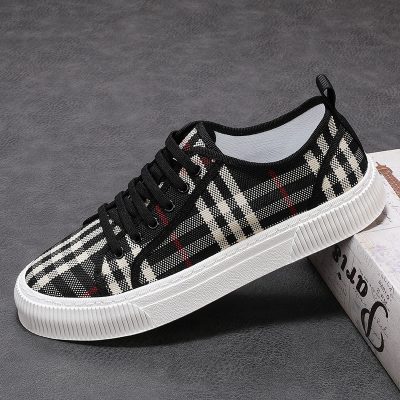Maximizing comfort in canvas shoe soles involves finding the right balance between cushioning and support to ensure optimal wearability for various activities and foot types. Here’s how to achieve the perfect combination:
1. Cushioning Materials
a. EVA (Ethylene Vinyl Acetate)
- Description: Lightweight foam material known for its excellent cushioning properties.
- Benefits:
- Provides soft, responsive cushioning for comfort during extended wear.
- Absorbs shock from walking and impact on hard surfaces.
- Offers flexibility and bounce-back resilience for a natural foot motion.
- Application: EVA midsoles are commonly used in casual and athletic canvas shoes for everyday comfort and support.
b. Memory Foam
- Description: Viscoelastic material that molds to the shape of the foot under pressure and returns to its original form when relieved.
- Benefits:
- Conforms to the unique contours of the foot, providing customized support and comfort.
- Distributes pressure evenly across the footbed, reducing hot spots and friction.
- Offers enhanced cushioning and shock absorption, ideal for individuals with sensitive feet or specific foot conditions.
- Application: Memory foam insoles or footbeds are often used in canvas shoes for added plushness and support.
c. Gel Inserts
- Description: Gel-filled pockets or pads strategically placed in the sole to provide targeted cushioning and shock absorption.
- Benefits:
- Offers superior impact protection and cushioning, especially in high-pressure areas like the heel and forefoot.
- Helps alleviate discomfort and fatigue during prolonged standing or walking.
- Provides a cooling sensation and reduces friction for added comfort.
- Application: Gel inserts are commonly incorporated into the heel or forefoot area of canvas shoe insoles for enhanced comfort and support.
2. Supportive Features
a. Arch Support
- Description: Contoured or raised sections of the sole designed to support the natural arch of the foot.
- Benefits:
- Maintains proper foot alignment and reduces strain on the arch, preventing overpronation or flat feet issues.
- Distributes weight evenly across the footbed, reducing pressure points and fatigue.
- Provides stability and balance, especially during activities that involve lateral movement or standing for long periods.
- Application: Canvas shoes with built-in arch support or removable orthotic insoles offer customized support for individuals with high arches or fallen arches.
b. Heel Cushioning
- Description: Additional padding or shock-absorbing materials in the heel area to reduce impact on the heel bone and joints.
- Benefits:
- Absorbs shock from heel strikes during walking or running, reducing the risk of heel pain or injury.
- Provides extra cushioning and comfort for individuals with plantar fasciitis, Achilles tendonitis, or heel spurs.
- Improves stability and gait mechanics by promoting a smoother heel-to-toe transition.
- Application: Canvas shoes with padded heel counters or gel heel inserts offer targeted cushioning and support for the heel area.
c. Toe Box Roominess
- Description: Ample space in the toe box area to accommodate natural toe splay and prevent constriction.
- Benefits:
- Allows toes to spread out naturally, reducing pressure and friction between toes.
- Prevents issues like bunions, hammertoes, and ingrown toenails caused by tight or narrow toe boxes.
- Enhances overall comfort and stability, especially during activities that require quick movements or changes in direction.
- Application: Canvas shoes with wide toe boxes or rounded toe shapes offer generous room for toe movement and flexibility.
3. Choosing the Right Combination
- Activity-Specific Support: Consider the level of cushioning and support needed for your intended activities, whether it’s casual walking, running errands, or light sports.
- Foot Type Consideration: Take into account your foot arch type (low, neutral, or high) and any existing foot conditions or concerns when selecting cushioning and support features.
- Personal Preference: Experiment with different combinations of cushioning materials and supportive features to find the optimal balance of comfort and functionality for your individual needs and preferences.
- Try Before You Buy: Test the shoes in-store or wear them around the house for a trial period to assess comfort, fit, and performance before making a final decision.
Conclusion
Maximizing comfort in canvas shoe soles involves selecting the right combination of cushioning materials and supportive features tailored to your activity level, foot type, and personal preferences. Whether you prefer the plushness of memory foam, the responsiveness of gel inserts, or the stability of arch support, there are various options available to enhance comfort and support in canvas shoes. By understanding the benefits and applications of different cushioning and support features, you can choose the perfect combination to keep your feet happy and healthy during all your daily adventures.


















